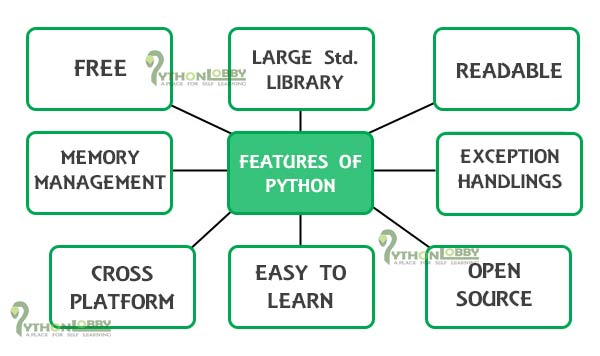Introduction to Python Programming Language
Introduction to Python Programming: The programming language we are going to start is Python. Python is an interpreted, high-level, general-purpose programming language. It is created by Guido van Rossum and first released in 1991. It is an example of a high-level language; other high-level languages you might have been heard of are C, C++, Perl, and Java.
As you might infer from the name “high-level language” there are also low-level languages, sometimes referred to as “machine languages” or “assembly languages”. Computers can only execute programs written in low-level languages. Programs written in high-level languages have to be processed before they can run. This extra processing takes some time, which is a small disadvantage of high-level languages.
High-level languages are much easier to learn and program. Programs in high-level language take less time to write. These languages are also portable, which means that they can run on different kinds of computers with a few or no modifications. Low-level languages can run only on one kind of computer and have to be re-written to run on another computer.
What are interpreters and compilers
Interpreter: Two kinds of program process high-level languages into low-level languages: interpreter and compiler. An interpreter reads a high-level program and executes it, which means it does what the programs say. An interpreter processes the program a little at a time, alternately reading lines and performing computations.

Compilers: A compiler reads the program and translates it completely before the program starts running. In this, the compiler takes high-level program code as a source code and convert it into object code after compilation and that object code executed in the executor to produce the output.

Python is considered an interpreted language because Python programs are executed by an interpreter. There are two ways to use an interpreter: command-line and script mode. In command-line mode, you type Python programs and the interpreter prints the result:
Command-line mode:

Script mode:

Features of Python programming

- Readability: Python is one of the easy and recommended programming language for beginners. It is high-level and easy syntax also easy to read.
- Cross-Platform: Cross-platform means that on any platform. Python programming language is cross-platform supported ie. it can run on any platform windows, Mac, Linux etc.
- Open Source: It is easily available on the internet free of cost. Hence it is known as an open-source programming language. Open Source Licensed.
- Easy to learn: As already mentioned above many times that it is best suitable for beginners as well as for professionals. Because it has easy syntax, compatible, and platform-independent. Hence it is very easy to learn as compared to any other programming languages whether it is Java, C/C++ etc.
- Automatic Memory Management: Python also supports an automatic memory management approach during assigning a value to any variable. In other words, you can also say that in python memory is freed and cleared you do not need to worry about memory management.
- Vast Libraries: Python also supports large pre-built libraries which makes code writing handy and short.
What we can do with Python?
Following are the given fields in which python is used:
- For developing desktop applications.
- For developing Web applications.
- For developing games.
- For Data Analysis.
- For Data Visualization.
- For Machine Learning algorithm implementations.
- For Deep Learning.
- For Artificial Intelligence.
Python programming compared to other programming languages
If we compare python programming language to others; python code runs slower than Java programs, but they also take much less time to develop. Python programs mostly take 4-5 times shorter than Java programs. Python’s built-in high-level data types and its dynamic typing make some differences.
In this guide, introduction to Python Python Programming, we have just learnt about some necessary and basic concepts of Python Programming Language. We will learn about each of its concepts in detail in the next tutorials.
Getting started with Python: click here to getting started with python.